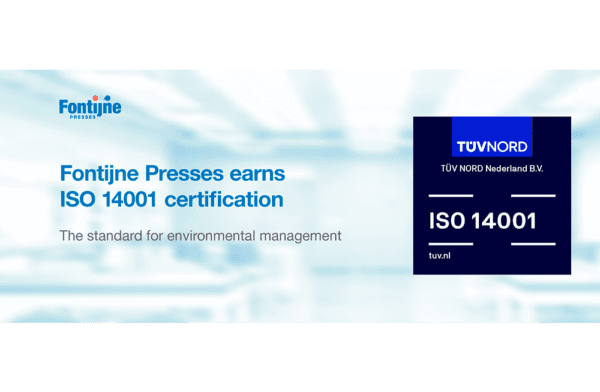
EmmersonWills Blog // ISO Standards Have Evolved – Have You?
|
Getting your Trinity Audio player ready...
|
In the world of business management and organisational efficiency, ISO standards have long been the gold standard. But like any gold standard, they are not static. They evolve and adapt to the changing landscape of industries, technologies, and management practices. In this blog, EmmersonWills explores the evolution of ISO standards from static compliance to dynamic continual improvement, highlighting the benefits and strategies for modern organisations to stay ahead.
In the world of business management and organisational efficiency, ISO standards have long been the gold standard. But like any gold standard, they are not static. They evolve and adapt to the changing landscape of industries, technologies, and management practices.
Before 2015, the primary mantra of ISO standards could be encapsulated in…
“Say what you do, and do what you say.”
This principle emphasised documenting processes and ensuring they were followed to the letter.
However, in the post-2015 era, the focus has shifted dramatically towards…
“Continual Improvement.”
This evolution reflects a deeper understanding that in today’s fast-paced world, standing still is not an option.
Ergo, ISO standards have evolved, focusing more on dynamic improvement than static compliance. Have you evolved with the standards, or are you still anchored to the old ways, inadvertently wasting time, effort, and money, and dragging down your organisational culture?
Understanding the Shift
ISO 9001 (Quality Management), ISO 14001 (Environmental Management), and ISO 45001 (Occupational Health and Safety Management) are cornerstone standards that many organisations strive to adhere to.
- ISO 9001:2015 focuses on quality management systems and emphasises the importance of understanding organisational context, leadership engagement, and a process-oriented approach. The new standard encourages risk-based thinking and opportunities for continuous improvement.
- ISO 14001:2015 provides a framework for environmental management systems and emphasises the integration of environmental management into core business processes. It advocates for lifecycle thinking and proactive initiatives to protect the environment.
- ISO 45001:2018, the newest of the trio, sets the stage for occupational health and safety management. It aims to prevent work-related injuries and illnesses by providing safe and healthy workplaces.
The Old vs. The New
The pre-2015 approach of “say what you do and do what you say” was foundational. It required organisations to establish documented procedures and adhere strictly to them. This approach ensured a level of consistency and compliance, which was crucial for quality control and regulatory adherence. However, it had limitations, primarily its static nature. Processes were often rigid, with little room for innovation or adaptation.
In contrast, the post-2015 focus on “continual improvement” acknowledges that the business environment is dynamic and requires flexibility. It’s about creating a culture of constant evaluation, feedback, and enhancement. It’s not just about compliance, but about performance and striving for excellence.
This shift also addresses the rapid pace of technological change. Internally, we have a saying: “never write a procedure if a process will do, and never write a process if a form will do.”
To put this into context, we now have electronic forms that themselves act as processes. Why have a procedure telling you how to fill in that form or process—which, by the way, could change—only to then have to update your procedure and risk an auditing non-conformance for a process that is rendered pointless?
Are You Still Stuck in the Old Ways?
If your organisation is still operating under the old paradigm, you might be encountering several issues:
- Wasted Time and Effort: Rigid adherence to outdated procedures can result in inefficiencies. Time spent maintaining cumbersome documentation and processes could be better invested in strategic initiatives.
- Missed Opportunities: A lack of emphasis on continual improvement means missed opportunities for innovation and process optimisation. Competitive advantages are often found in the ability to adapt and improve rapidly.
- Cultural Stagnation: The old approach can foster a compliance-focused culture rather than one that values improvement and excellence. This can lead to low employee engagement and a lack of motivation to drive positive change.
Embracing the New Standards
To fully leverage the benefits of the evolved ISO standards, consider the following strategies:
- Engage Leadership: Ensure that top management is committed to the principles of continual improvement. Leadership should actively promote a culture of quality, environmental stewardship, and safety.
- Risk-Based Thinking: Integrate risk management into your processes. Identify potential risks and opportunities to proactively address them.
- Employee Involvement: Foster an environment where employees at all levels are encouraged to contribute ideas for improvement. Their firsthand insights can be invaluable.
- Regular Reviews and Audits: Conduct regular internal audits and reviews to assess the effectiveness of your management systems. Use these insights to drive improvements.
- Training and Development: Invest in ongoing training for your staff to keep them abreast of the latest best practices and standards.
Conclusion
ISO standards have evolved, focusing more on dynamic improvement than static compliance. Ask yourself: Are you still working to the old ways, and therefore wasting time, effort, and money, dragging down your culture towards ISO and continual improvement? Embracing the new standards can unlock significant benefits for your organisation, from enhanced efficiency to a more motivated and innovative workforce. The choice is yours – evolve with the standards, or risk being left behind.
Read more news from EmmersonWills here.
EmmersonWills
0800 433 2207
Website
Email






